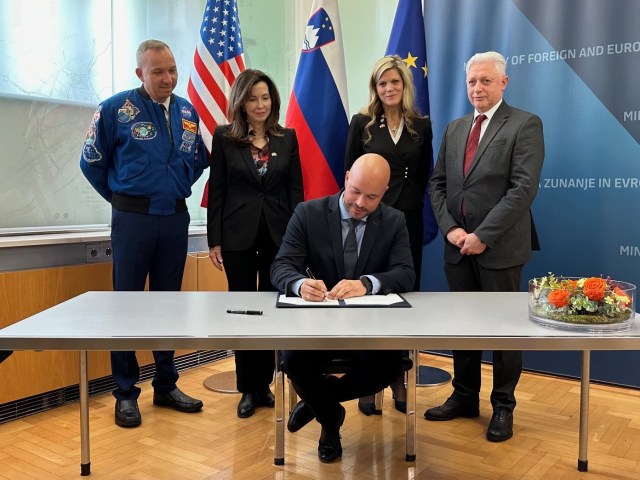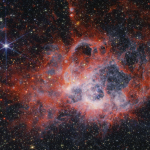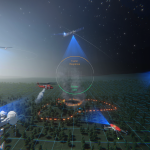This is the first installment in a four-part series of conversations with Paul Geithner, deputy project manager, technical, for the James Webb Space Telescope at NASA’s Goddard Space Flight Center in Greenbelt, Maryland, about different aspects of the Webb.
The Webb telescope is a showcase for new technologies. Recently Paul Geithner provided a closer look at the technologies on the observatory.
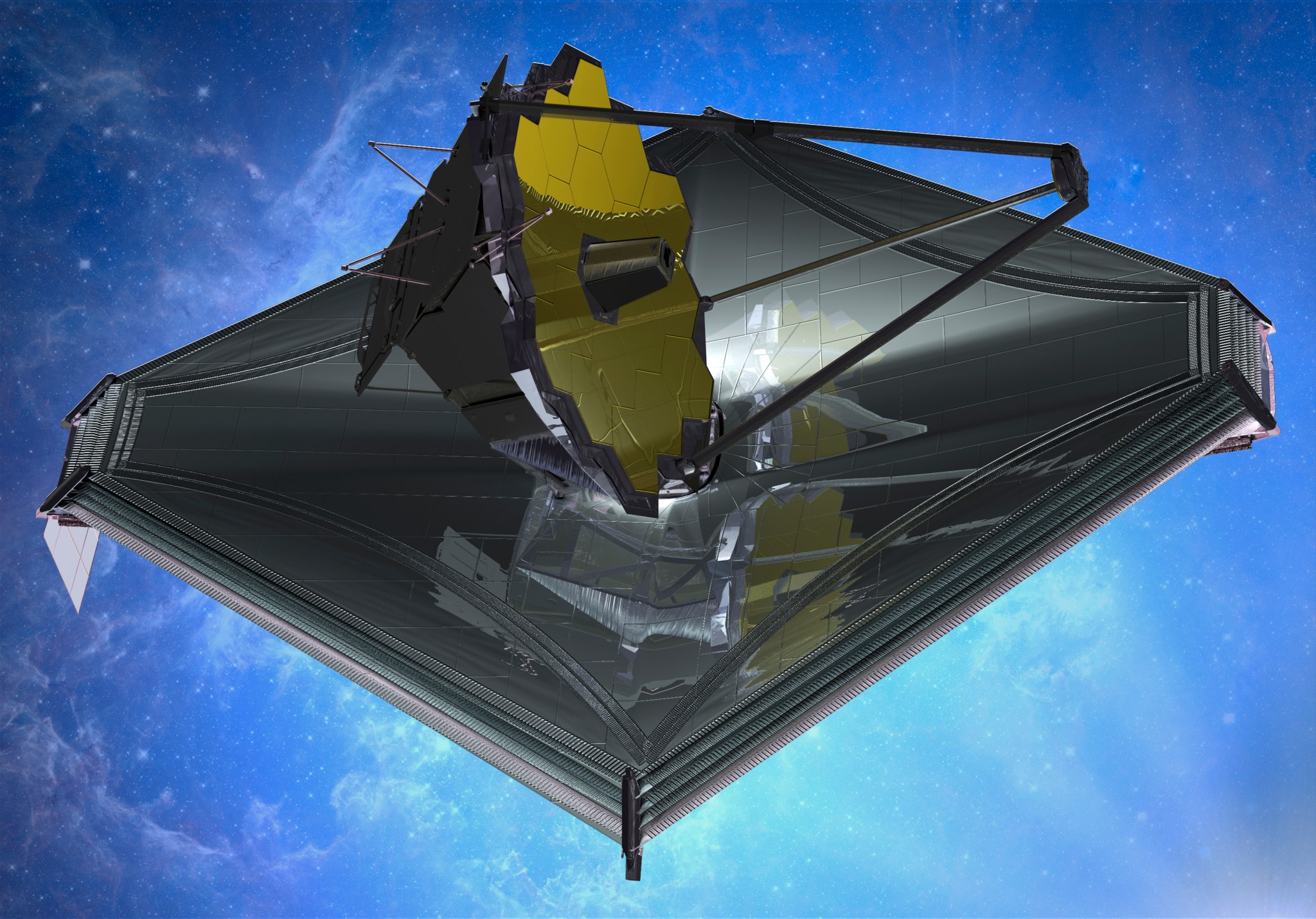
Q: The Webb telescope seems to have a lot of unique technologies on board. Can you explain what they are?
Paul: Sure. The Webb telescope features many novel technologies that make it feasible. Among these are large, lightweight, deployable structures and optics; software and mechanisms needed to control the segmented mirrors; and ultra-sensitive infrared light detectors. Webb is breaking the mold in terms of its size; it will be the largest space telescope. The scale of its deployment in space, and scope of its very cold, a.k.a. cryogenic, telescope and scientific instruments.
Q: What are the four main parts of the Webb?
Paul: The Webb observatory has four main ‘elements’ –the telescope, the instrument module, the sunshield and the spacecraft bus.
Q: What is the primary mirror and why does it have to be so large?
Paul: The telescope features a primary mirror comprised of 18 individual hexagonal mirror segments that, when combined, have a 6.5 meter (21.3-foot) diameter. The mirror segments deploy, or unfold, and get aligned in space by commands from Earth. The telescope also includes three other types of mirrors.
Size matters when it comes to telescopes. The bigger the main mirror a telescope has, the more light it can gather and the more sensitive it can be and the more detail it can resolve. Webb is fairly big by ground telescope standards, assome of the newest ground telescopes have bigger main mirrors, but 6.5 meters (21.3-foot) is absolutely huge for a space telescope.
Q: What are the other three types of mirrors on the Webb?
Paul: NASA’s Webb telescope includes a secondary, tertiary and fine-steering mirror. Although the relatively small secondary and tertiary mirrors are unique, it’s the expansive primary mirror that has the most complicated anatomy with a number of components operating together to make the telescope work.
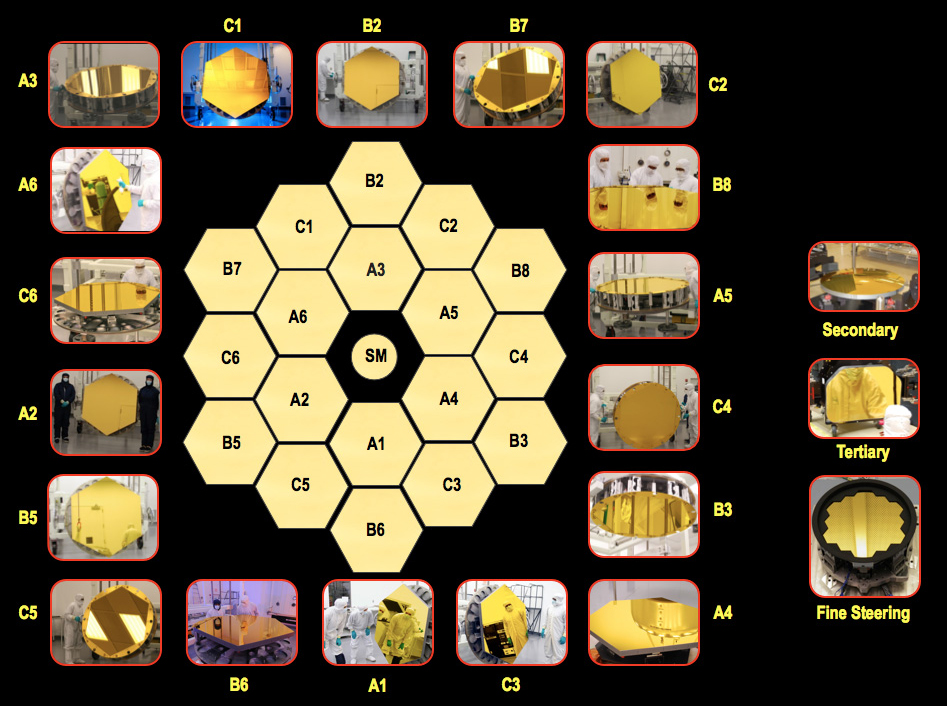
Unlike the primary mirror segments, the single secondary mirror is perfectly rounded and convex, so the reflective surface bulges toward the light source. The tertiary mirror is the third stop for light coming into the telescope and is the only fixed mirror in the system — all of the other mirrors align to it.
The light from an object reflects off the primary mirror, the secondary mirror, and off the tertiary and fine steering mirrors, before entering the science instruments in the back of the telescope.
All of the mirrors working together will provide Webb with the most advanced infrared vision of any space observatory ever launched by NASA.
Q: You mentioned the “instrument module” – what does that consist of?
Paul: Webb has four ‘scientific instruments’ –cameras and spectrometers that “see” infrared light and record images and spectra of astronomical objects. The telescope mirrors and instruments together make up the ‘cold half’ of the observatory.
Q: Why does the Webb need a “sunshield” and what does it do?
Paul: The instruments are shaded from the sun by a tennis court-sized five-layer deployable sunshield. The sunshield consists of deployable booms and gossamer polymer membranes, which are layers of bonded molecules that make up the thin sheets, coated with reflective aluminum and a protective silicon coating. Basically, it looks like a five-layered giant silver kite in space.
We need a sunshield to keep the telescope and instruments cold because Webb is an infrared telescope, which means it sees infrared light. Infrared light is light that is of slightly longer, or redder, wavelengths than visible light. We cannot see it with our eyes but we can feel it as radiant heat.
For an infrared telescope to be as sensitive as possible, its optics and scientific instruments need to be very cold so that their own heat does not blind them to the faint infrared signals they are trying to observe from astronomical objects.
Q: What does the spacecraft bus consist of?
Paul: The bus is the infrastructure of a spacecraft. All of the basic infrastructure functions like control systems and communications, fuel tanks, batteries, etc. are housed in it and it is bathed in perpetual sunshine on the sunny side of the sunshield.
Q: Why is it important to build a satellite or space telescope in a clean room?
Paul: Contamination can affect a space telescope’s performance. Different parts are vulnerable to different things. The mirrors, detectors, and sunshield membranes are sensitive to contamination, the electronics are sensitive to electrostatic discharge, some of the mechanisms and composite structures are sensitive to moisture. We build and assemble Webb with great care in cleanrooms so as to minimize these risks to performance. The biggest mechanical stress that the telescope’s graphite-epoxy composite structure will see is actually the stress from shrinkage as it cools down.
Q: What benefit is it to have Webb’s orbit (about 1 million miles) so far away from Earth?
Paul: Webb will be free of any distortions in astronomical signals caused by Earth’s atmosphere, which distorts and absorbs light, and even emits its own infrared light. Webb’s combination of large optics, location in space, and cold temperature will make it exquisitely sensitive and tremendously powerful.
NASA’s James Webb Space Telescope is the world’s next-generation space observatory and successor to NASA’s Hubble Space Telescope. Designed to be the most powerful space telescope ever built, Webb will observe the most distant objects in the universe, provide images of the first galaxies formed and see unexplored planets around distant stars. The Webb telescope is a joint project of NASA, the European Space Agency and the Canadian Space Agency.
For more information about the James Webb Space Telescope, visit www.nasa.gov/webb or www.jwst.nasa.gov.
Rob Gutro
NASA’s Goddard Space Flight Center, Greenbelt, Maryland


























